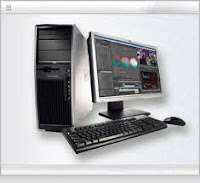Clearly Biotech and Nuclear are different. When it comes to automated systems there are plenty of similarities across multiple industries:
-Data Integrity
-System Access and Security
-Hardware and Architecture Infrastructure
-Human Machine Interfaces
-Virtual Machines and/or servers (a key area for separation of systems and functionality)
-Operational or functional requirements
-Alarms and warnings with reporting and automated actions
-Electronic signatures, audit trails, and record keeping
Another similarity is the CFR requirement to verify and validate computer systems in both industries with plenty of regulatory oversite to go around for all. Biotech and Pharma has had many years to embrace very highly automated manufacturing practices. (Note: glossary of terms at end of article) PLCs and VSCs interact with the DCS and BAS/BMS. The DCS interfaces with the MES. The MES exchanges information with corporate IT networks. Most of that data is GMP and is therefore subject to regulation. A risk based approach (nothing new for Nuclear) is emphasized for determining critical functionality in order to best apply QA scrutiny to Engineerings plans and testing, but in the end everything is tested via commissioning and qualification. Call it validation or call it verification, the computer systems must be verified.
I should clarify the statement that everything is tested....Software functionality is verified, but not every aspect of every automated system can be tested. That would be a poor application of our Engineering and Quality expertise. Use of Vendor quality assessments and commercial off the shelf designations allow us to focus on project or system customization and configuration. Software coding standards and design documentation allow for consistent software design. Clear user and functional requirements allow for design and code review to ensure that the design meets the intended purpose, is per design standards, and is testable.
Biotech and Pharma have done a masterful job working with industry and the regulators to develop consensus standards such as the ISPE GAMP (Good Automation Manufacturing Practices) Guides. NQA-1 might not be our only answer. Consensus or best practice guides should be available to help the Nuclear industry navigate through the use and verification of automated systems and even digital instrument and control conversion.
System complexity and the differentiation between Safety and Non-safety systems should be addressed in a cooperative manner between the regulators and the multiple reactor and automated system vendors. Clearly concerns such as touch screen control and "smart" systems that automatically point to alarms or out of tolerance parameters and events will be a recurring theme across all new builds and conversions. Whether it is Safety or not does not alleviate the requirement for the automated system to work. Therefore good requirements and good standards are required to handle the control room of the future...one without individual or dedicated switches, lights, knobs, and control wires.
See my previous posts on Digital Instrumentation and Control Upgrades and Electrical and Water Cyber security-- Time to innovate
See a related post on Securing critical digital assets at nuclear power plants
over at at Cool Hand Nuke, a nuclear energy jobs portal and a whole lot more.

Glossary:
PLC-Programable Logic Controller
VSC-Vendor Supplied Controller
DCS-Distributed Control System
BAS-Building Automation System
BMS-Building Management System
MES-Manufacturing Execution System
GMP-Good Manufacturing Practices (Designated as Critical or Safety systems for nuclear)




No comments:
Post a Comment